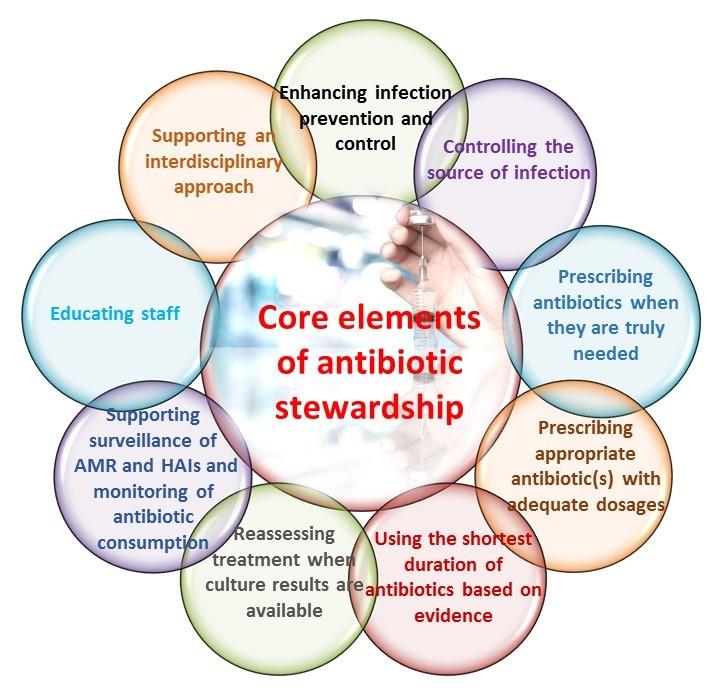Chapter 4: Antibiotic Stewardship
exp date isn't null, but text field is
4.1. Introduction
Inappropriate and overuse of antibiotic contributes to the emergence of resistant bacteria, which in turn making infectious diseases untreatable. The development and widespread use of antibiotic agents has been among the most important public health interventions in the last century. Soon after the widespread use of antimicrobials in medicine, human pathogens expressing resistance to these agents were isolated. Antimicrobial stewardship (AMS) programs have been pursuing this goal for decades globally. These programs focus on ensuring the proper use of antimicrobials to provide the best patient outcomes, lessen the risk of adverse effects, promote cost-effectiveness and reduce or stabilize levels of resistance.
The terms used to refer to antimicrobial stewardships programs may vary considerably, antibiotic policies, antibiotic management programs, antibiotic control programs and other terms may be used more or less interchangeably. These terms generally refer to an overarching program to change and direct antimicrobial use at a health care institution, which may employ any of a number of individual strategies. The variety of activities that can be considered antimicrobial stewardship under the broadest definition are large. Reduction in total or targeted antimicrobial use, increase in appropriate drug use, improvement in susceptibility profiles of hospital pathogens, and improvement in clinical markers (such as reduced length of stay) are now being increasingly targeted as outcomes by antimicrobial stewardship programs.
4.2. Context
On 7 April 2011, on the occasion of World Health Day, World Health Organization (WHO) introduced a policy package to combat antimicrobial resistance, which lists critical actions by all stakeholders to stimulate change. At the sixty-seventh World
Health Assembly (WHA) in May 2014, Member States approved a resolution, WHA
67.25, requesting WHO to draft a global action plan on antimicrobial resistance. At the Sixty-eight World Health Assembly in May 2015, the World Health Assembly endorsed a global action plan to tackle antimicrobial resistance, including antibiotic resistance, the most urgent drug resistance trend. The goal of the draft global action plan is to ensure, for as long as possible, continuity of successful treatment and prevention of infectious diseases, with effective and safe medicines that are quality assured, used in a responsible way, and accessible to all who need them.
To achieve this goal, the global action plan sets out five strategic objectives:
- To improve awareness and understanding of antimicrobial resistance;
- To strengthen knowledge through surveillance and research;
- To reduce the incidence of infection;
- To optimize the use of antimicrobial agents; and
Develop the economic case for sustainable investment that takes account of the needs of all countries, and increase investment in new medicines, diagnostic tools, vaccines and other interventions.
4.3. Association between Antimicrobial Use and Resistance
In order to attenuate antimicrobial resistance, it is necessary to have a precise understanding of the relationship between antimicrobial use and resistance. The spectrum of requisite knowledge stretches from the in vitro interactions between antimicrobial molecules and their microbial targets, to the individual risks associated with administering an antimicrobial to a given patient, to the ecologic level where the aggregate use of antimicrobial use are studied using hospital wide or nationwide data. The nature of these drug-organism relationships is likely to be highly variable depending on the drug-microbe combination of interest, although some common themes may emerge. Despite thousands of scientific investigations on the subject, we are only beginning to understand many of these complex relationships, especially at an ecologic level.
Reference: (National Antimicrobial Stewardship Quality Improvement (QI) Framework, MOHFW 2019)
Core elements of Antimicrobial Stewardship:

